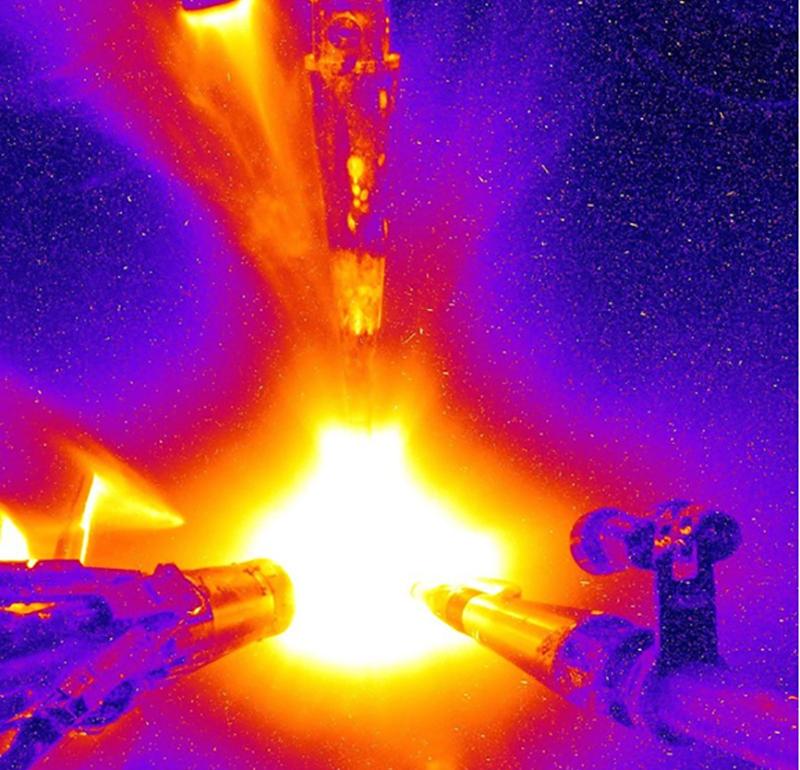Researchers at threshold of fusion ignition
This month, an experiment at Lawrence Livermore National Laboratory’s (LLNL’s) National Ignition Facility (NIF), USA, made a significant step toward ignition, achieving a yield of more than 1.3MJ.

Colorised image of a NIF 'Big Foot' deuterium-tritium (DT) implosion in Feburary 2016. This shot was the Inertial Confinement Fusion program’s first layered DT fusion implosion using the Big Foot strategy in a sub-scale diamond ablator.
© Don JedlovecThe experiment was enabled by focusing laser light from NIF onto a target to produce a hot-spot, generating more than 10 quadrillion watts of fusion power for 100 trillionths of a second.
‘These extraordinary results from NIF advance the science that NNSA depends on to modernise our nuclear weapons and production as well as open new avenues of research,’ claims Jill Hruby, DOE under secretary for Nuclear Security and NNSA administrator.
Perhaps more importantly, fusion ignition is also an important gateway to an energy source. The scientists hope one day to reach the ignition point of the target, where it gives off 100% or more energy than it absorbs.
While a full scientific interpretation of these results will occur through the peer-reviewed process, initial analysis shows an eight times improvement over experiments conducted in spring 2021.
‘Gaining experimental access to thermonuclear burn in the laboratory is the culmination of decades of scientific and technological work stretching across nearly 50 years,’ said Los Alamos National Laboratory Director Thomas Mason. ‘This enables experiments that will check theory and simulation in the high energy density regime more rigorously than ever possible before and will enable fundamental achievements in applied science and engineering.’
The experiment built on several advances gained from insights developed over the last several years by the NIF team including new diagnostics; target fabrication improvements in the hohlraum, capsule shell and fill tube; improved laser precision; and design changes to increase the energy coupled to the implosion and the compression of the implosion.







